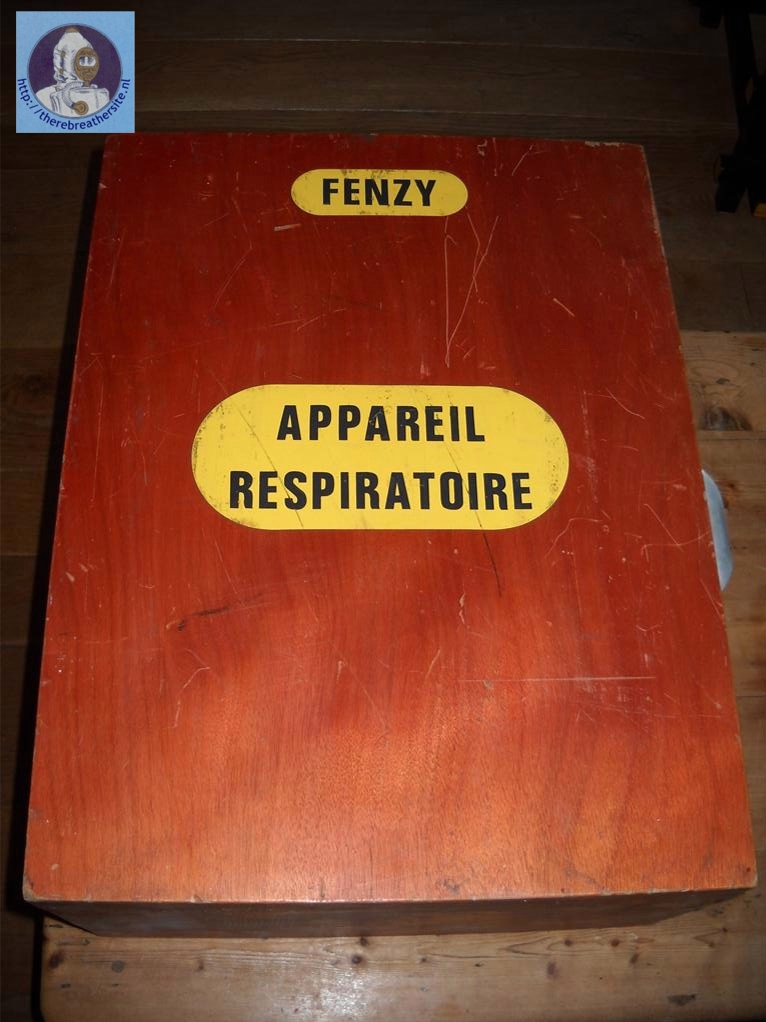 |
|
|
The unit comes in a wooden box specially designed
for this rebreather. Appareil Respiratoire = Breathing Apparatus. Fenzy a French company is located in Montreuil. Google Maps Link |
|
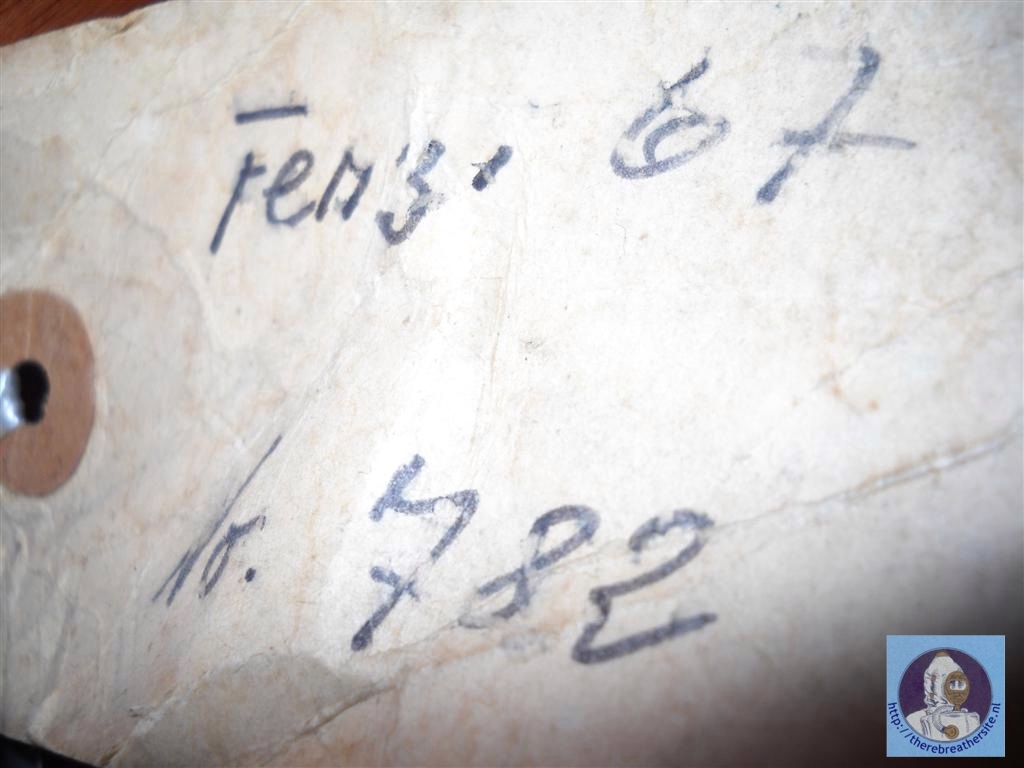 |
|
| The box was labelled with the model 67 and serial 783. There is a MM version of this unit onn my web already but that unit has other specifications. Here you find the info about the 67MM | |
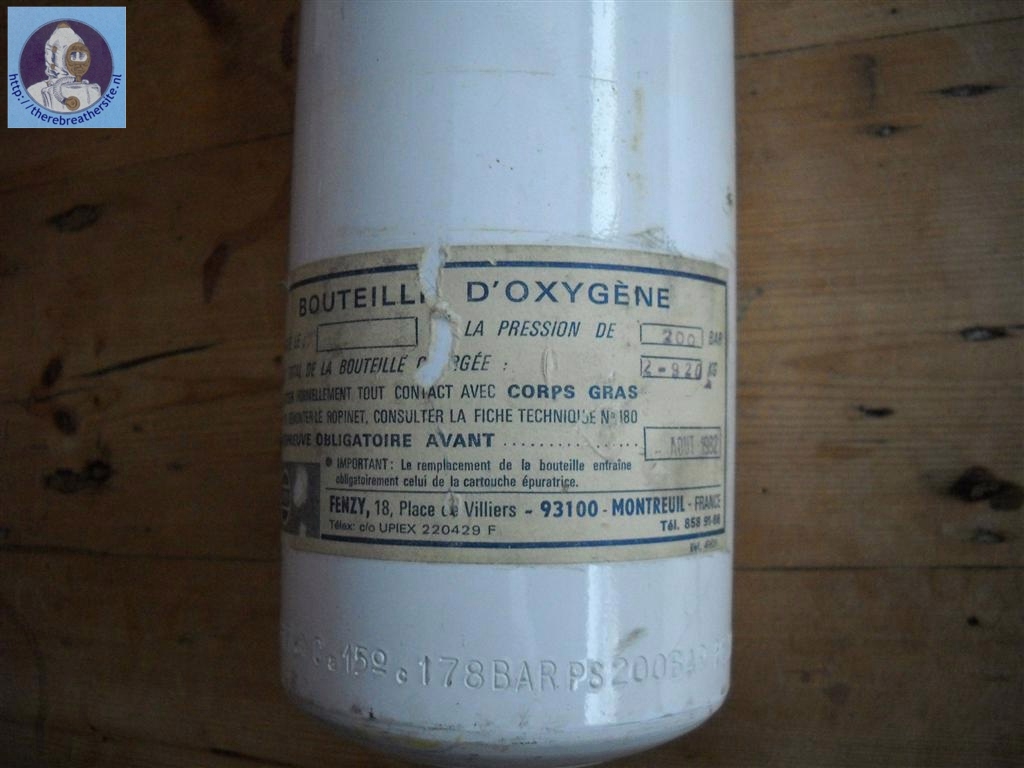 |
|
| The oxygenbottle has a water volume of 1,75 ltr and was hydrotested untill August 1982. The gasvolume of 1,75 x 200 bar = 350 liter. The 67MM has a 1,8 ltr/min constant oxygen injection, meaning a ~3 hour breathing time. The scrubber has approx 3,2 - 3,4 liters of sofnolime so the design oxygen reserve vs scrubber time could be well choosen. | |
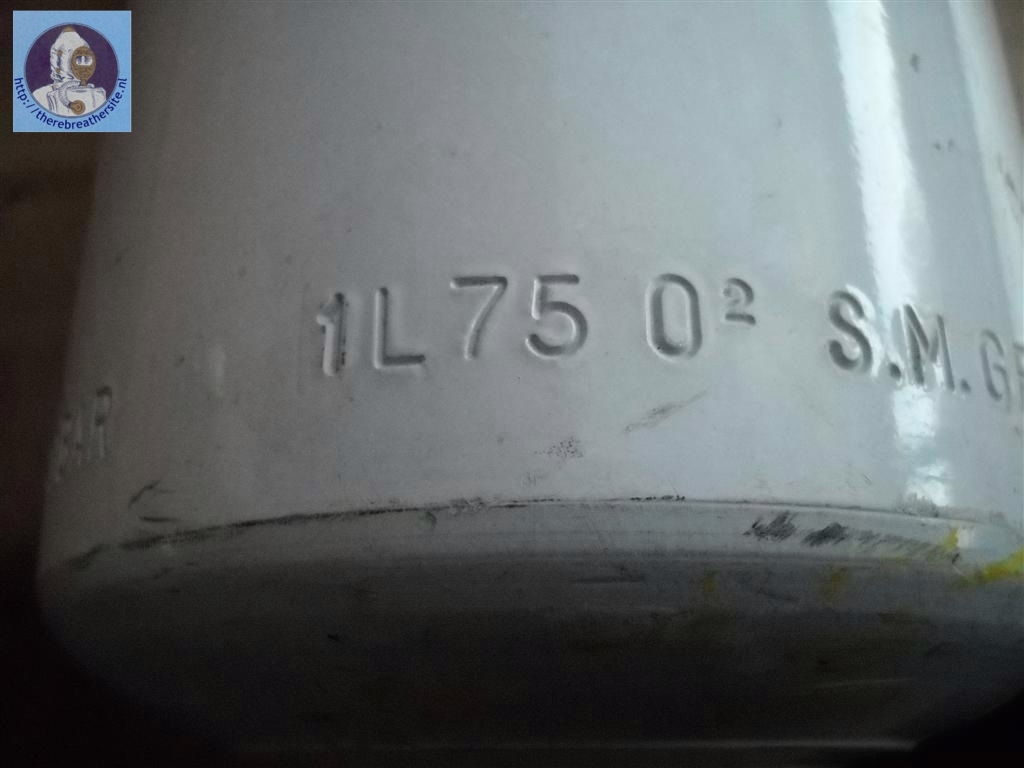 |
|
| The aluminium bottles are made by S.M.G Gerzat. | |
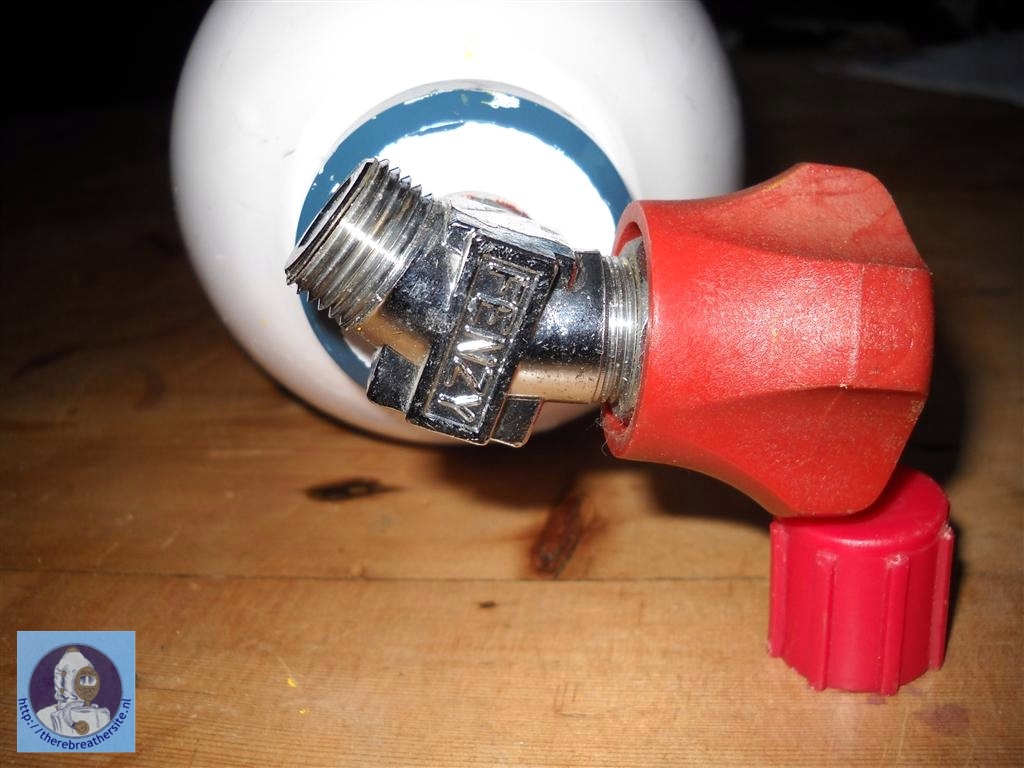 |
|
| The special designed valve is equipped with NEN-EN 144-1 M18x1,5 oxygen thread | |
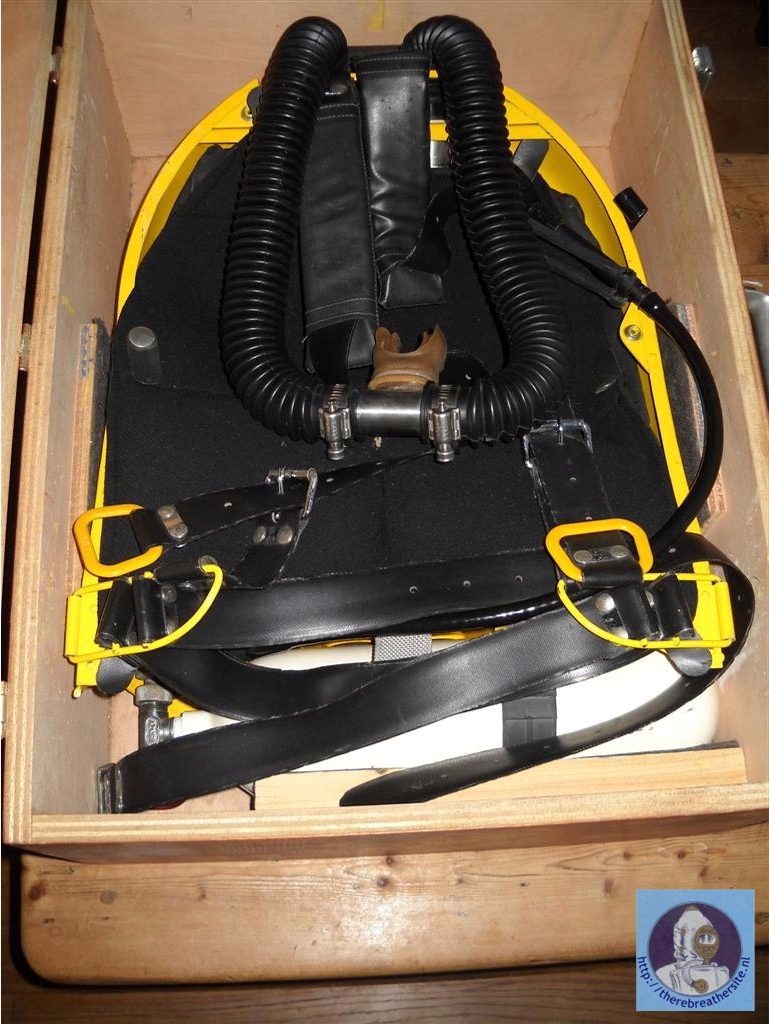 |
|
| Here we see the unit in the wooden box. | |
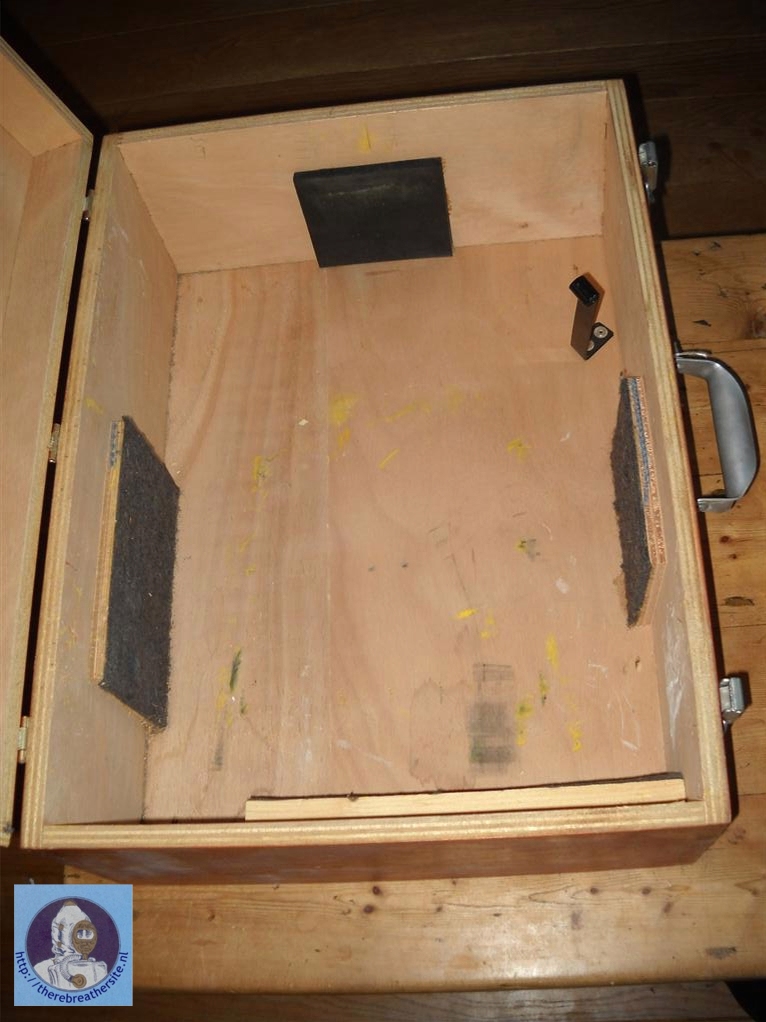 |
|
| In the box there is a spring to prevent the unit from slinding in the box when trasported. | |
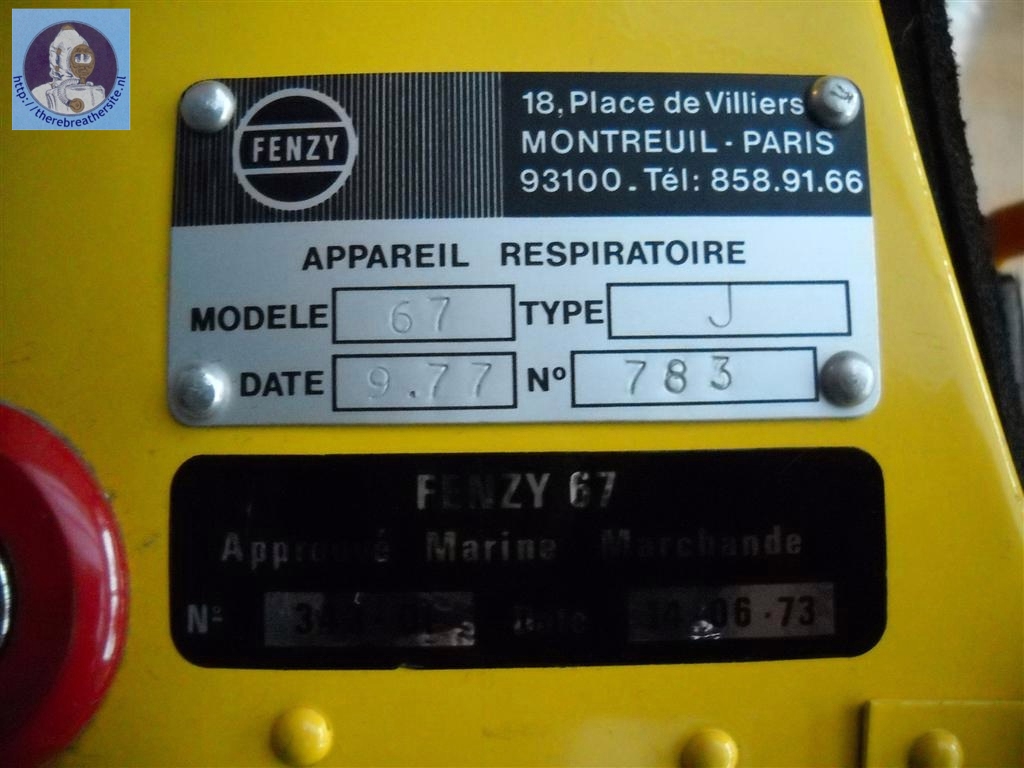 |
|
| Model 67 type J build september 1977 and serial 783. The Fenzy 67J was in use with the Marine Marchande ( Merchant Marine) | |
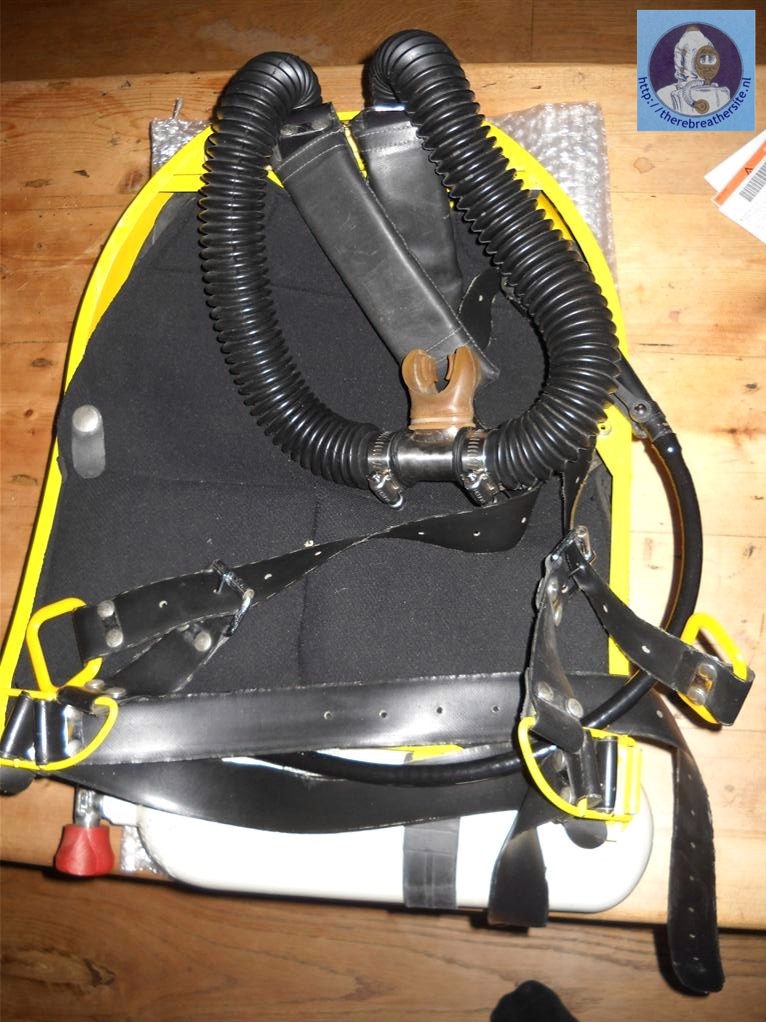 |
|
| When the unit is completely original it seemed to be modified for underwateruse. I hope this can be prooved when the original manual can be obtained | |
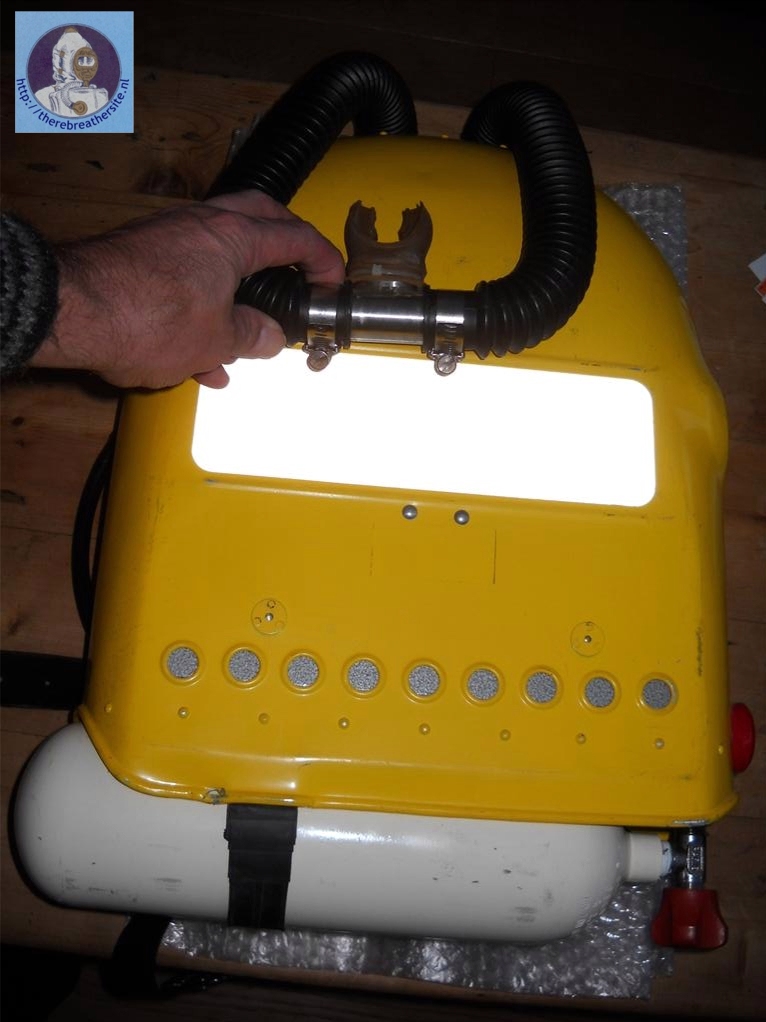 |
|
| The unit is supplied with a reflective sticker for easy recognision when dark | |
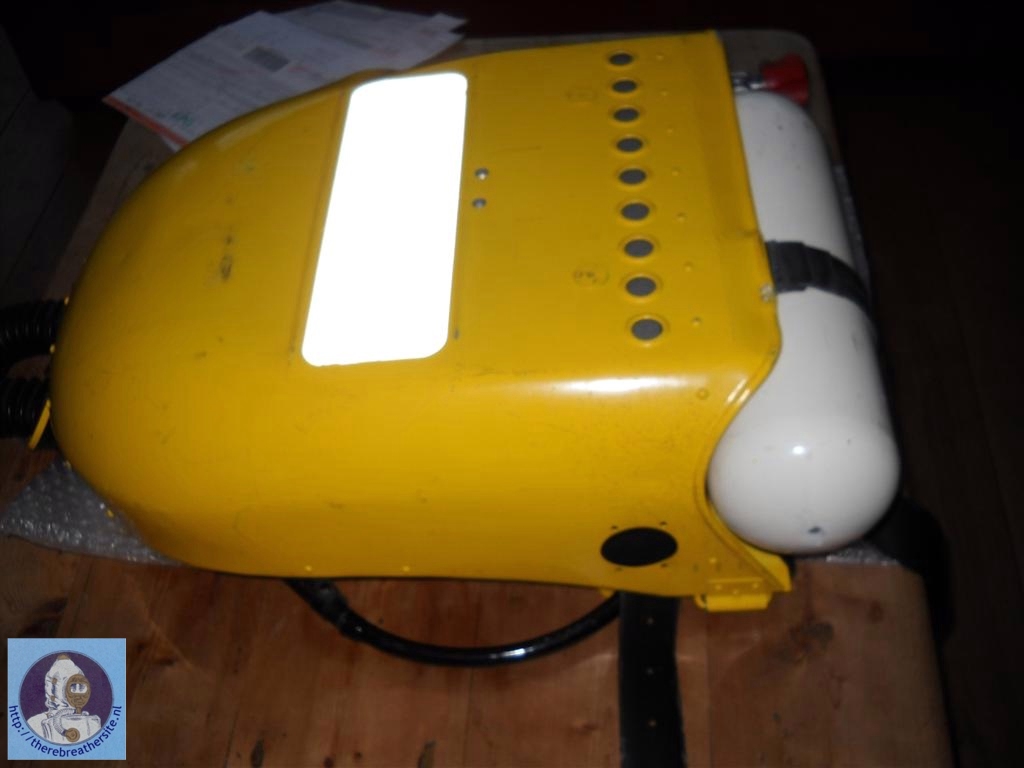 |
|
|
On the left side of the unit a switchblock has been
removed. The original switch can be seen on the picture of the 67MM Since a tube on the pressure reducer has been disconnected, it is likely this tube originally was used to adjust the flow to the counterlung. |
|
 |
 |
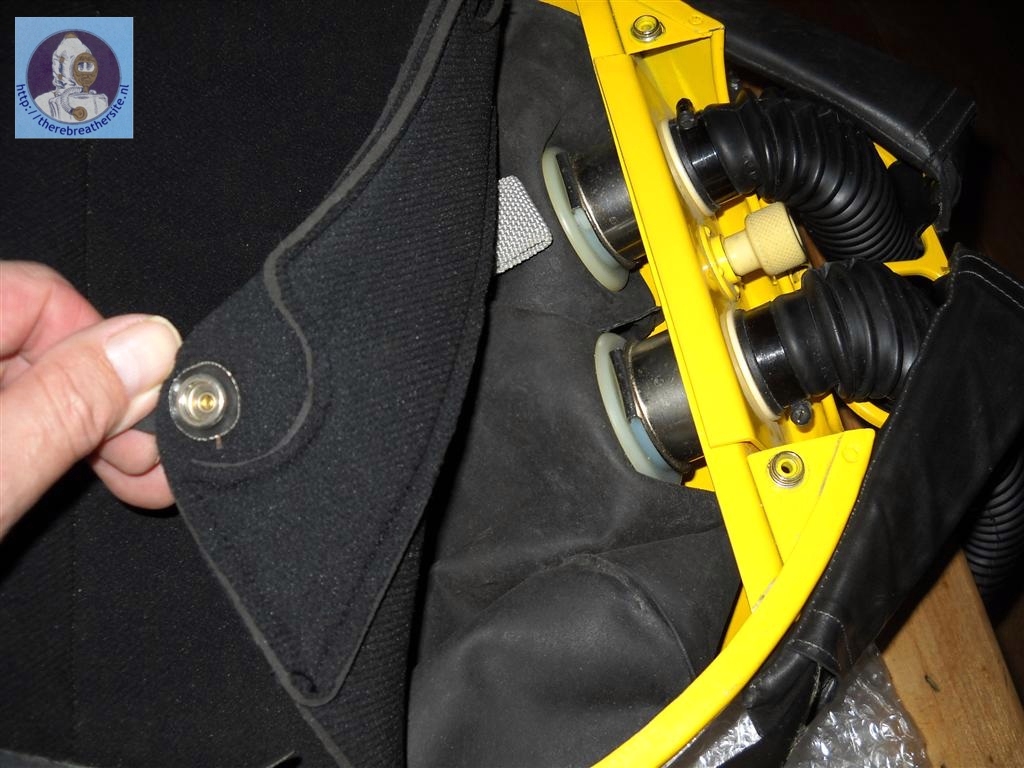 |
|
|
The inside of the unit is equipped with a cover to
protect the counterlung and scrubber, and the wearer to offer
comfort. It is easily removed and the inner parts of the unit appear |
|
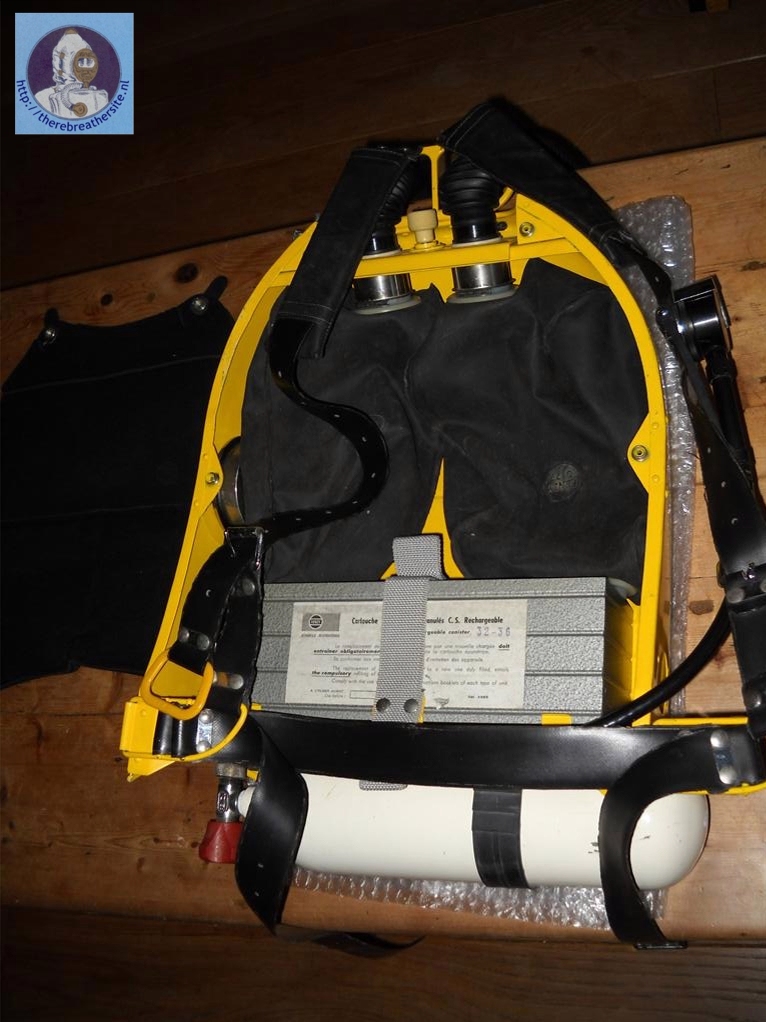 |
|
| The first thing that strikes is the very clean building style and most important! separate counterlungs! That makes the unit a perfect model for changing into a MCCR! | |
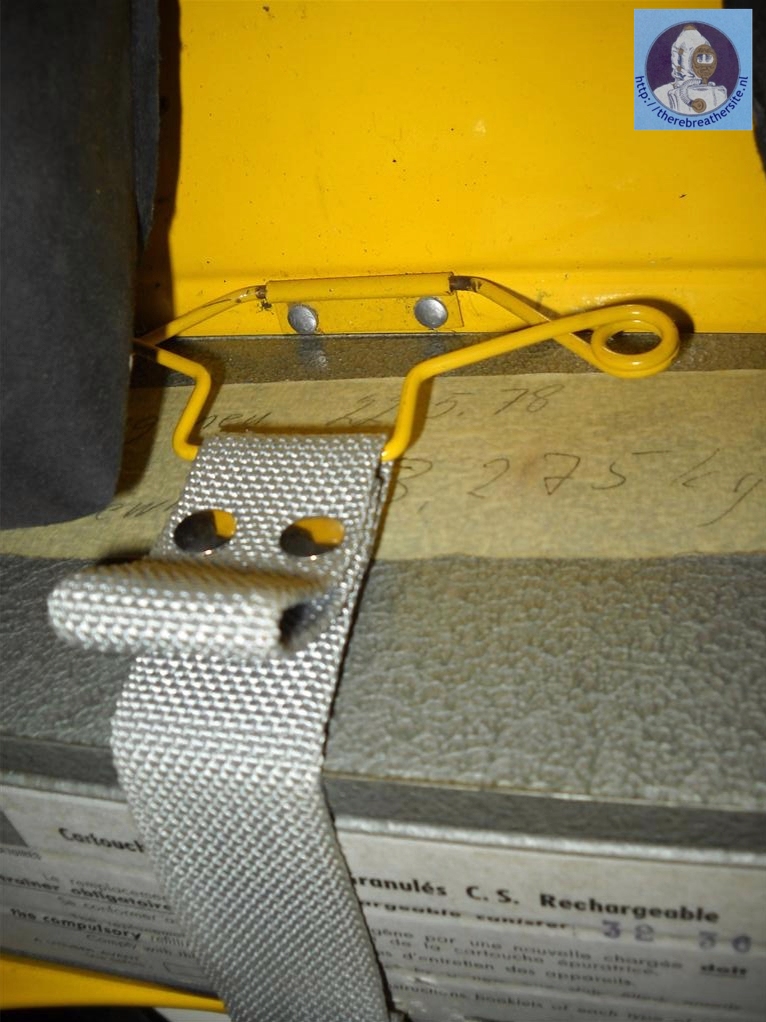 |
|
| The scrubber is mounted on two pins inthe rebreather cover and hold with one springloaded strap. | |
 |
|
| By pulling the strap the metal clip releases and the scrubber is ready to be taken out. | |
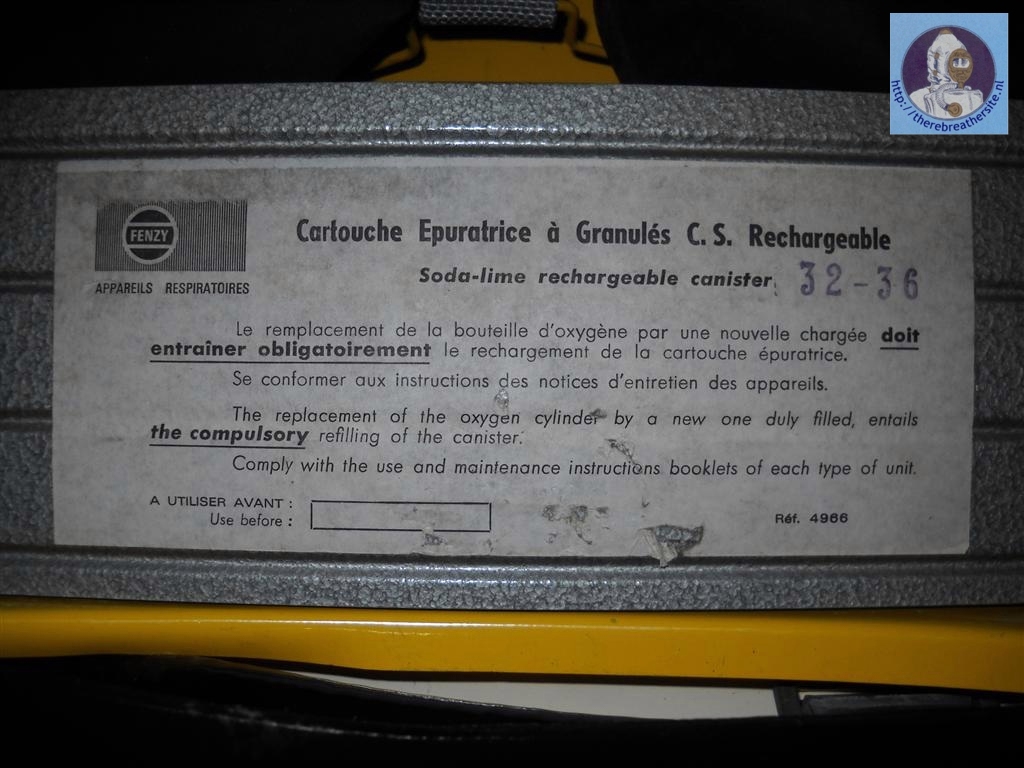 |
|
| Clear relation between scrubber filling and cylinder filling! | |
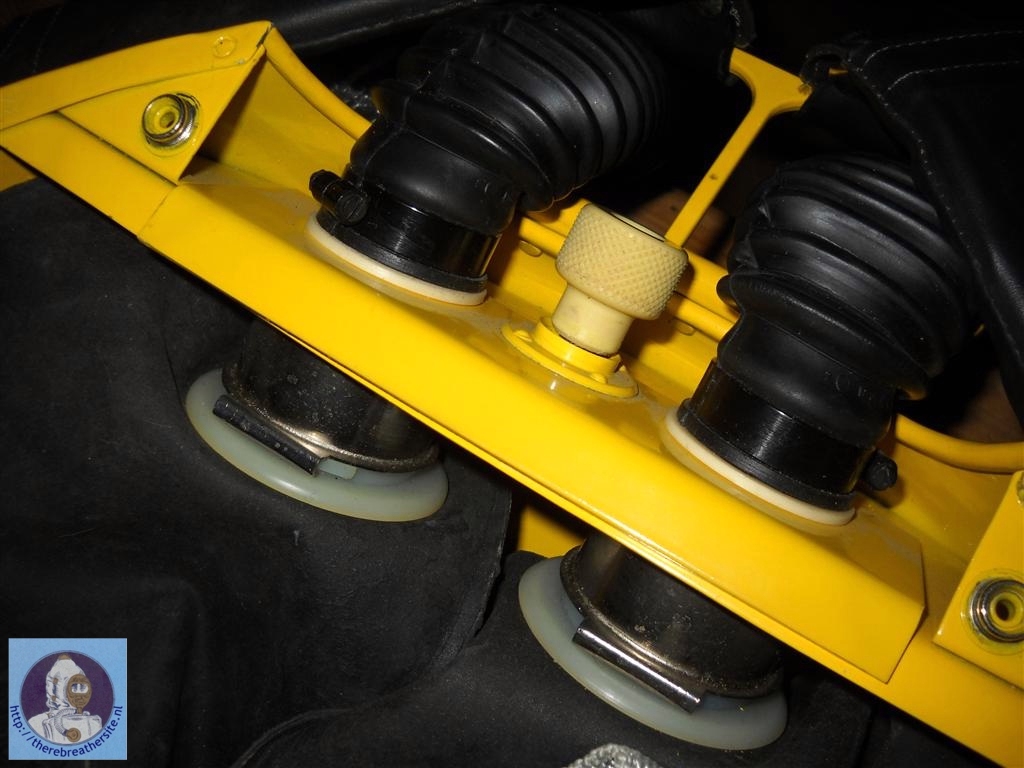 |
|
| This is one of the most clever hose connectors I have ever seen! The design order must have been something like: We want the hoses to be taken of the unit without the aid of tools. The should not be a screwconnection, and left and right hose (inhale and exhale) may not be switched accidentally | |
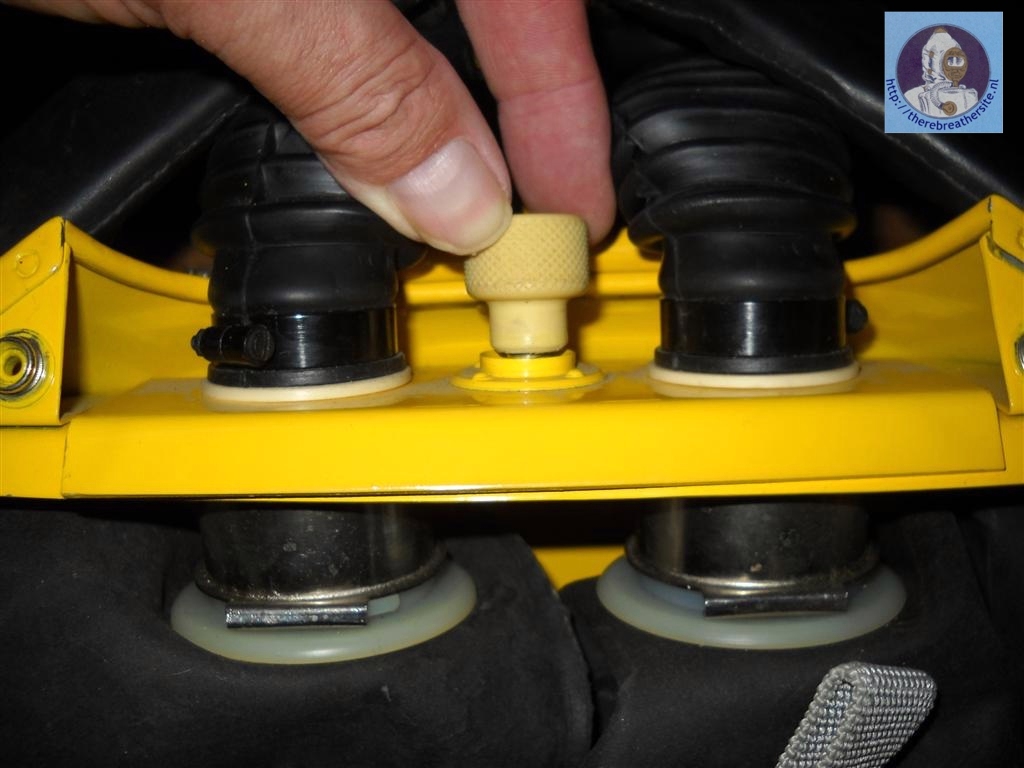 |
|
| To take the hoses off you just unscrew the yellow screw (it cant be taken off completely) | |
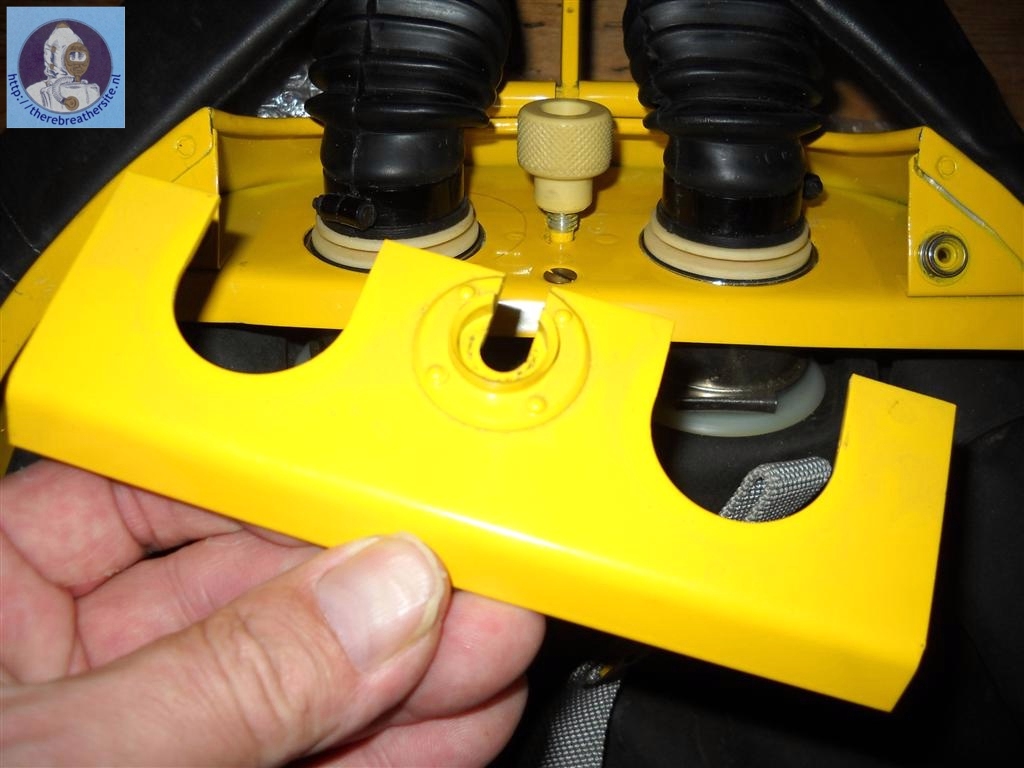 |
|
| You then take out the "push"plate that locks the two hoses in place. The connection is cylindrical and has 1 O-ring as a seal. | |
 |
|
| Here you see the exhale hose plugged out the connection | |
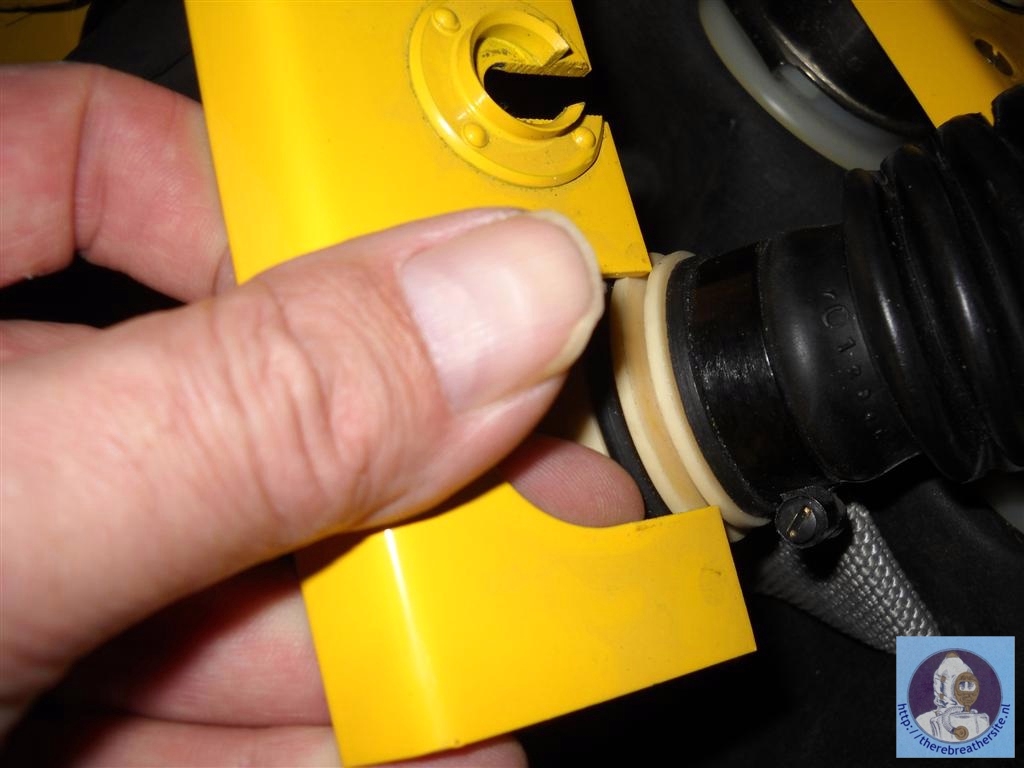 |
|
| The push plate slides in the adaptor so the hoses can never be taken off the unit when the plate is in place | |
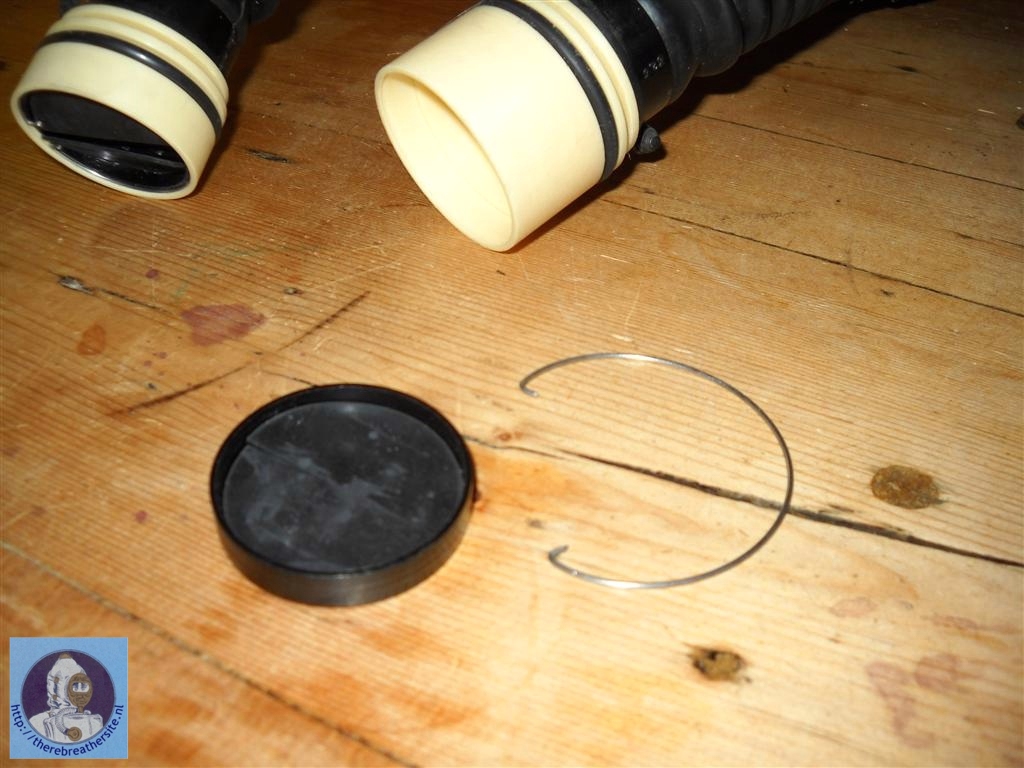 |
|
| The valves both inhale and exhale are identical. They can be taken out the connection without tools. Just take the spring from the connector and the valve can be taken out. | |
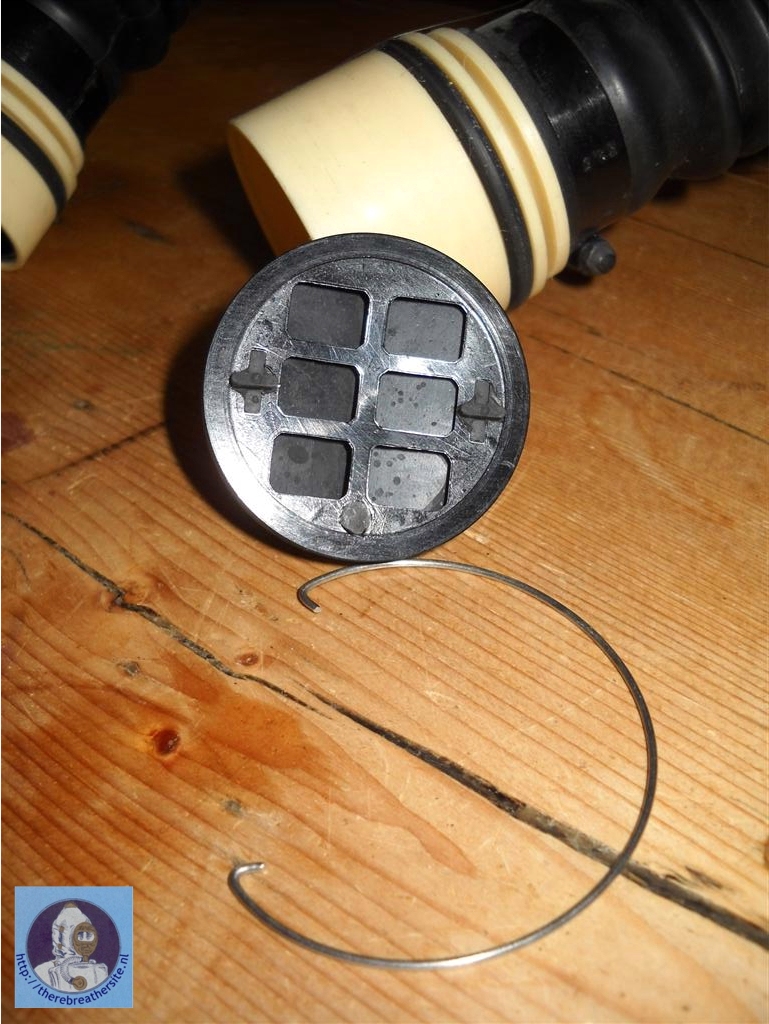 |
|
| The valve operates like a double door. Very simple but effective | |
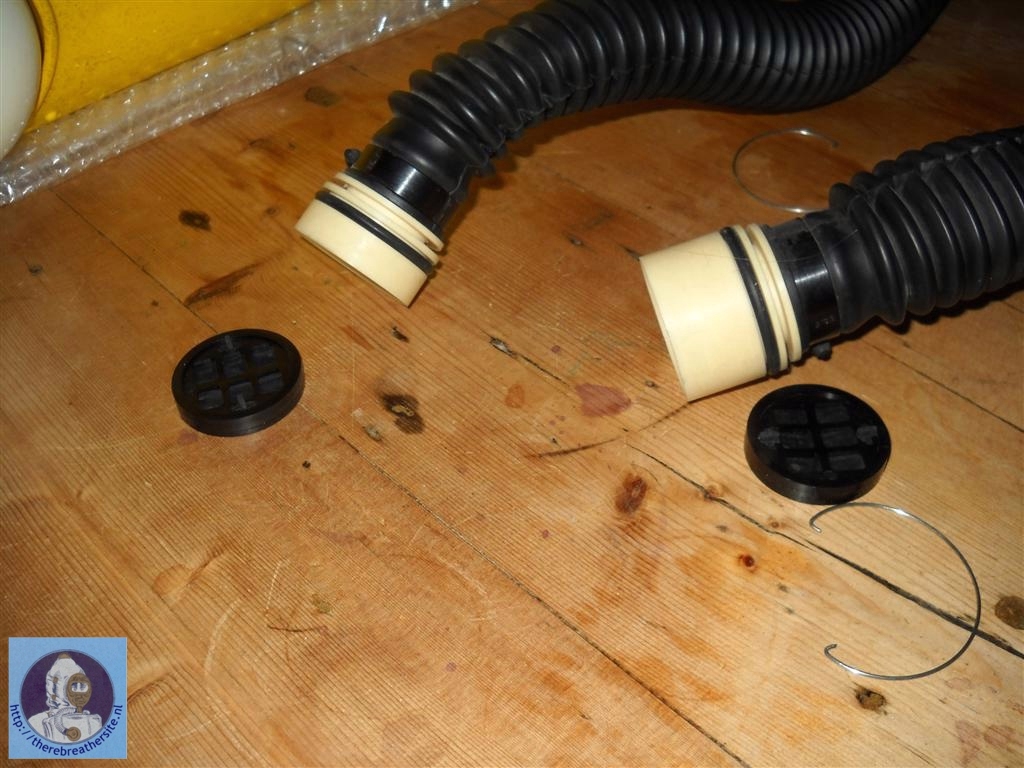 |
|
| Here you see the identical valves. If you need to replace them you have to be aware of the flow direction of course | |
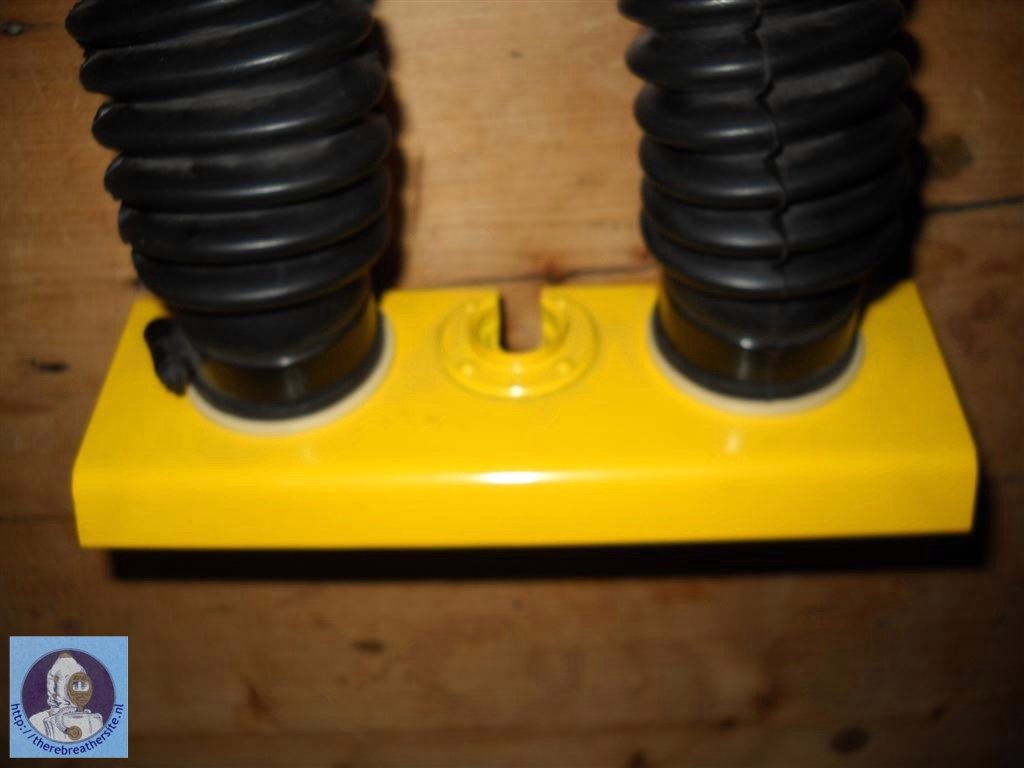 |
|
| again, the locking plate and hoses | |
 |
|
| The counterlungs are different in construction. The inhale lung has three connections, the exhale lung has two connections. All the connections are of a quarter turn type and do not seal with the chrome connectors. This is because the O-ring is situated on the inside of the connector. The hose has connectors that seal on the inside of the counterlung. Thats why the O-ring is on the inside! | |
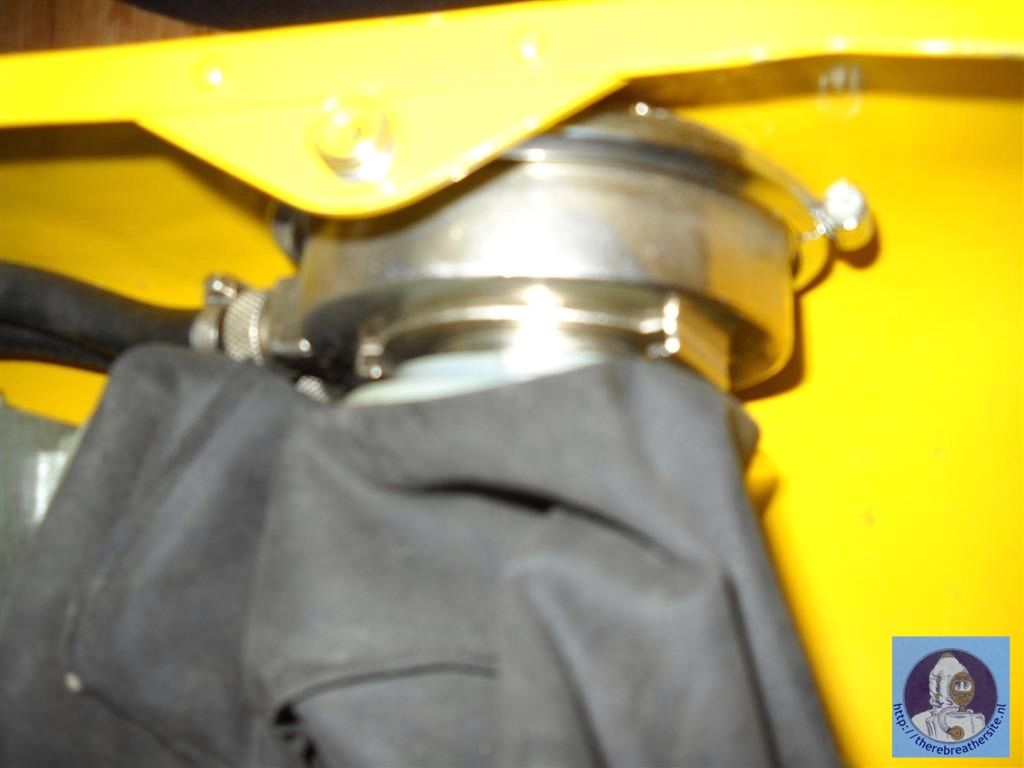 |
|
| Detail of the inhale counterlung. Here you see the second connection to the "on demand"valve situated on the left side of the diver. | |
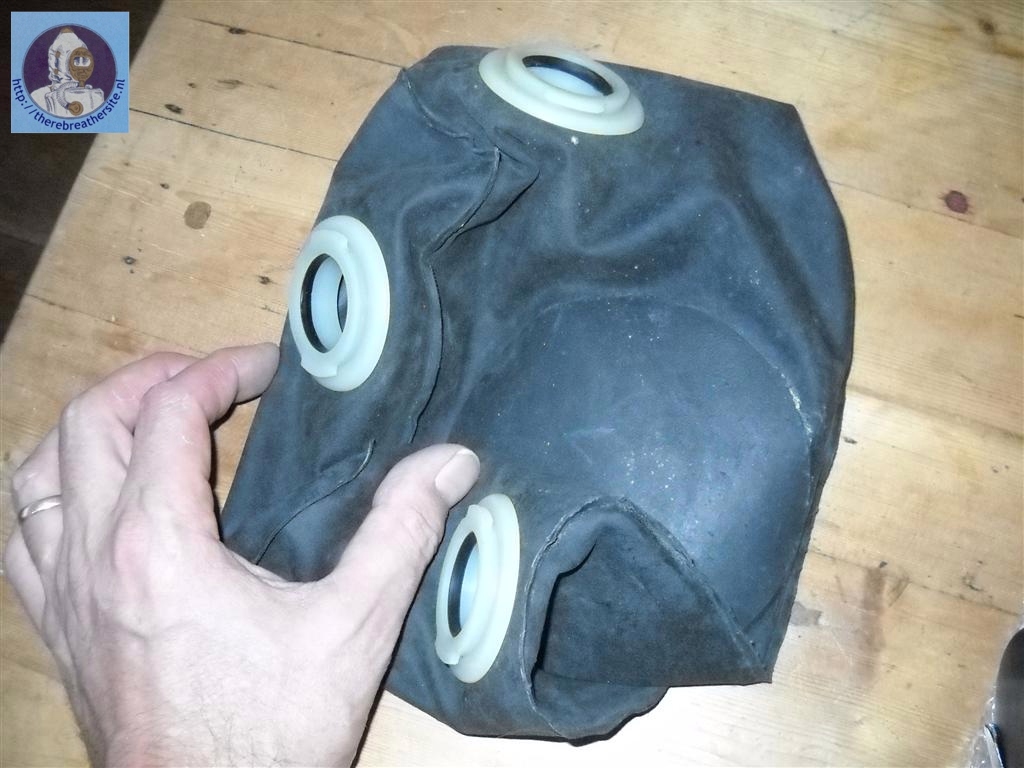 |
|
| Here you see the three connections of the inhale CL. One connect the scrubber, the second the on demand valve, the third the inhale side of the breathing loop | |
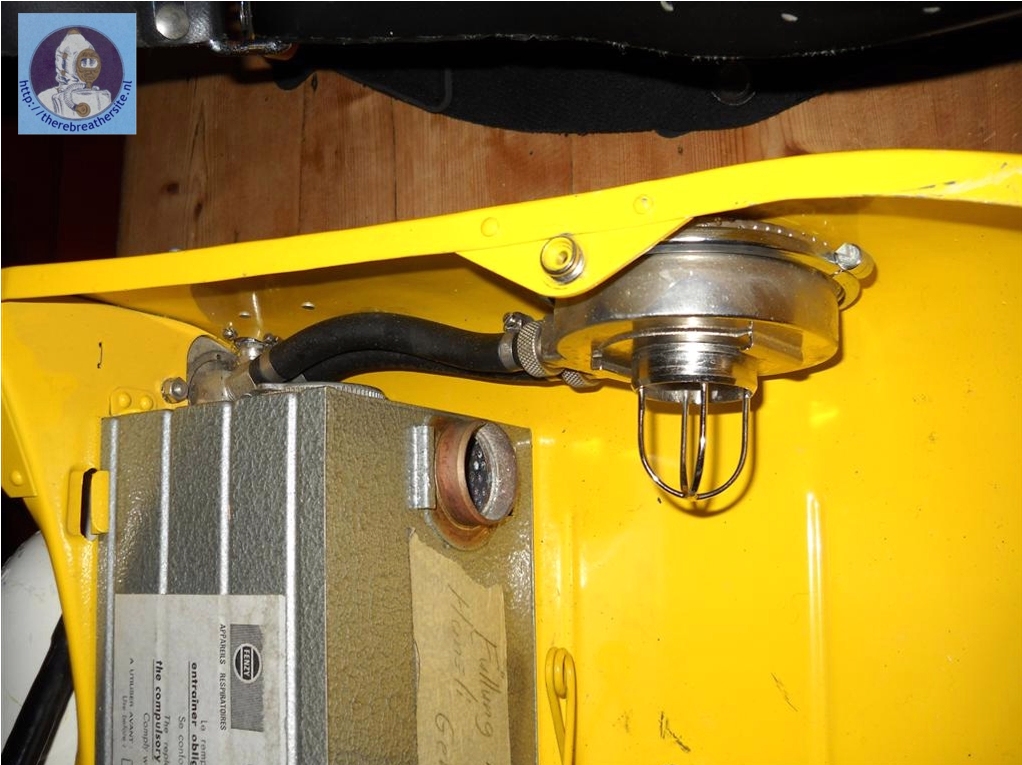 |
|
| Connection of the inhale CL to the scrubber and the demand valve | |
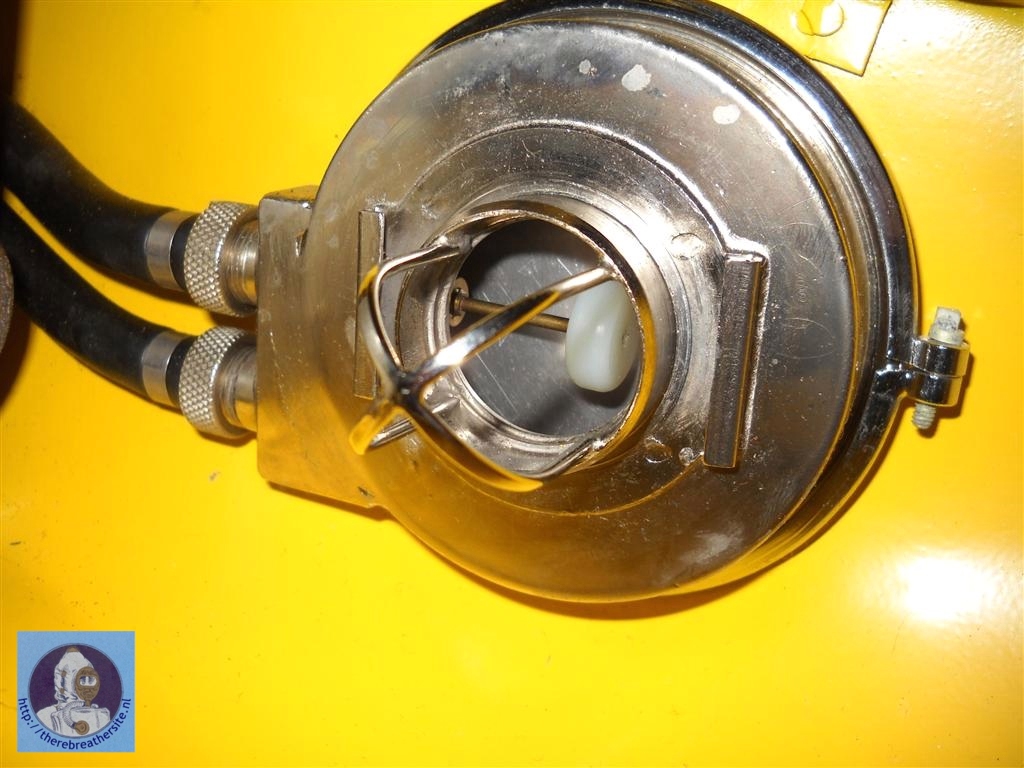 |
|
| Here you see the construction of the demand valve. The valve is actuated by underpressure when the supply is to little (hard labour) or when the constant flow stops due to failure.(if constant flow is equipped on this version of the unit..) The second hose comes from the bypass valve. It offers the diver the possibility to bypass the automatic system manually. | |
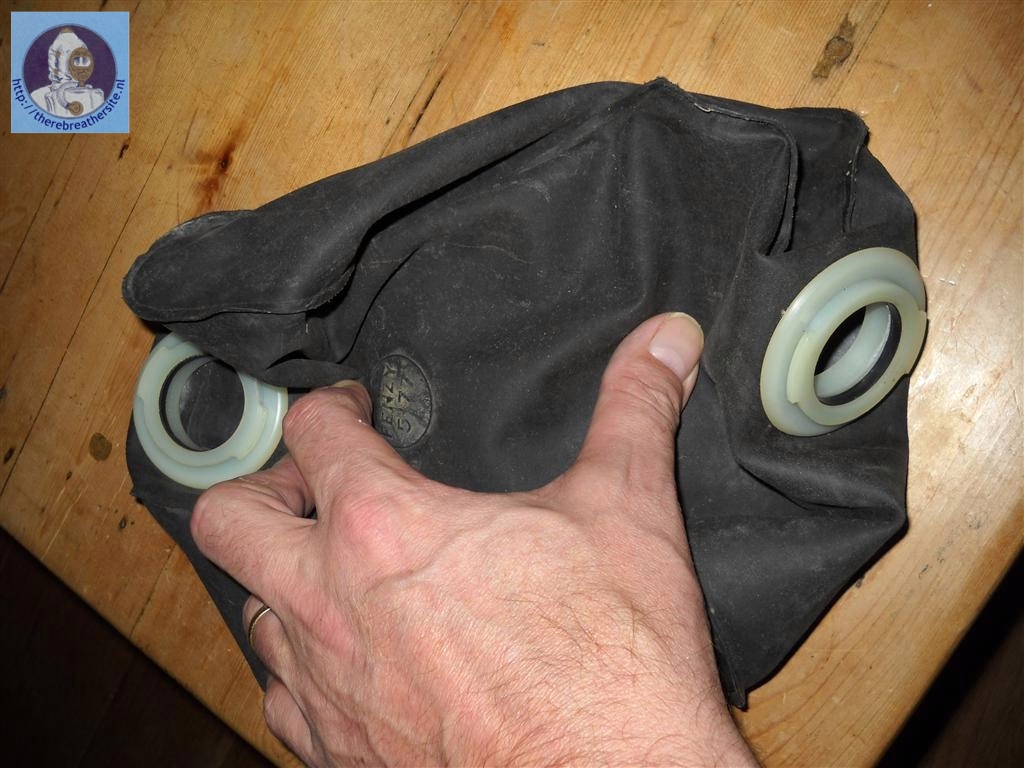 |
|
| Here you see the two connectors of the exhale lung. There is a overpressure valve situated between the housing and the lung. | |
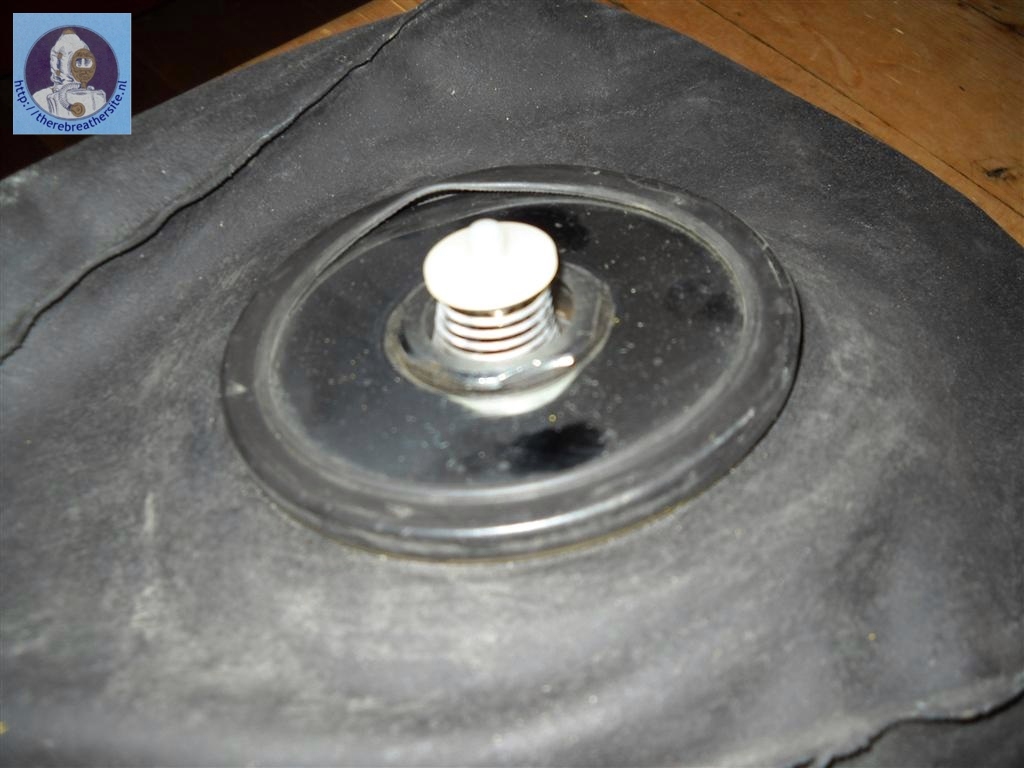 |
|
| The overpressure valve is activated when the loop volume is to big and the counterlung expands against the rebreather housing. | |
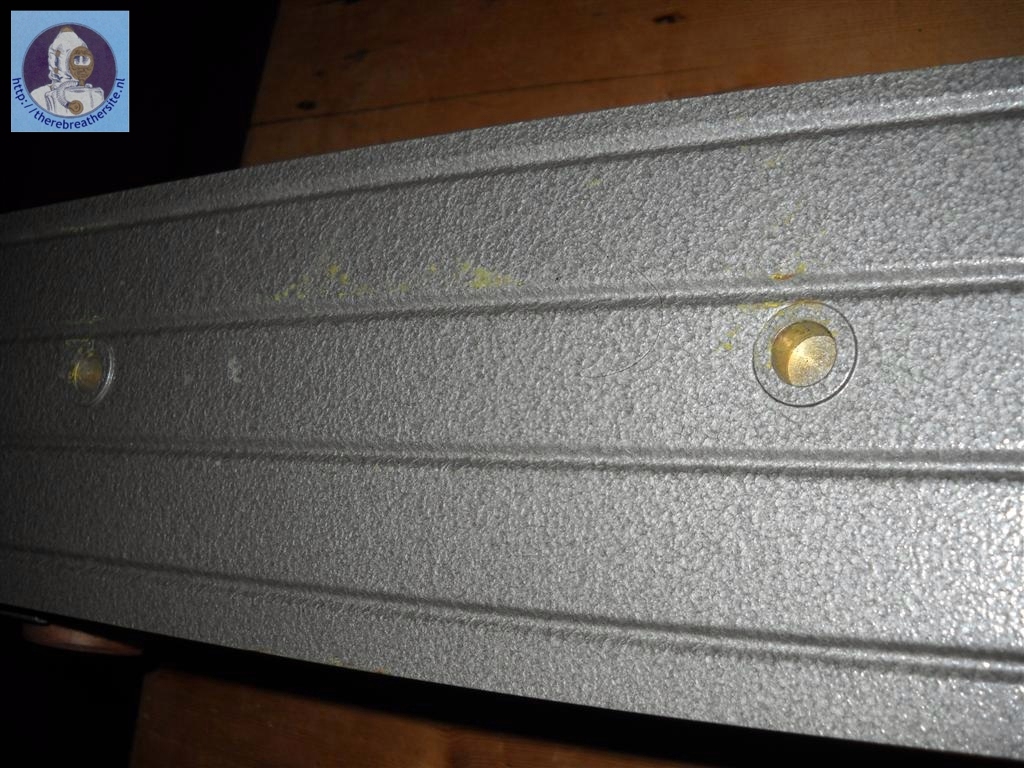 |
|
| This feature is added for stability of the scrubber when fixed in the housing | |
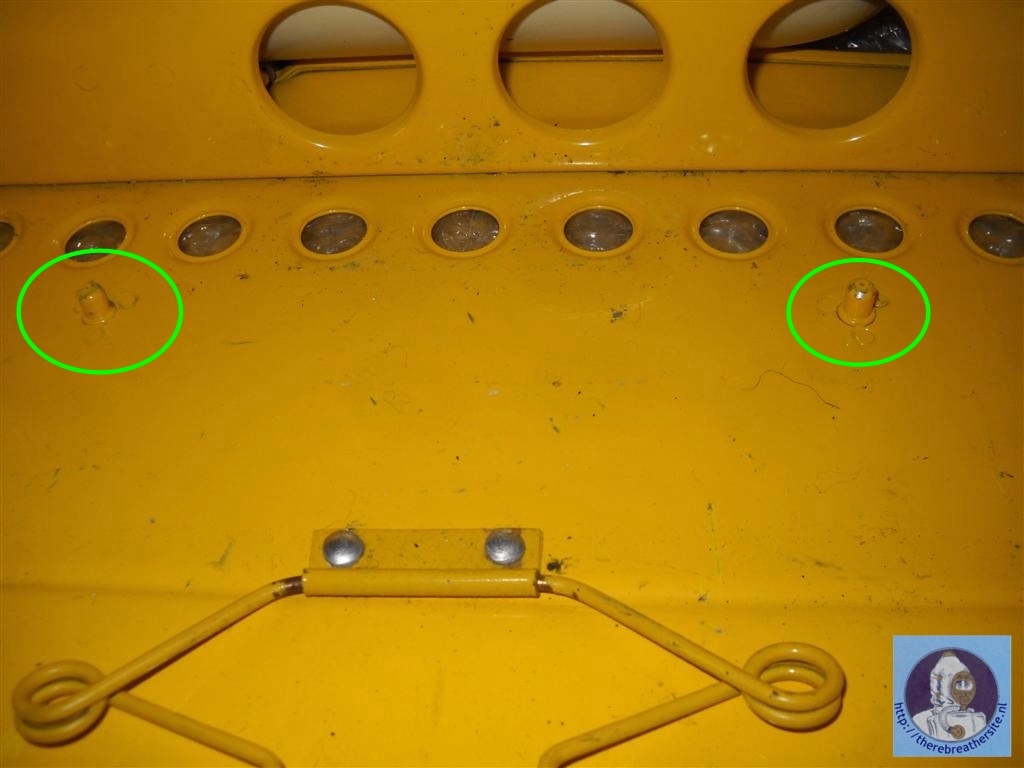 |
|
| The housing is equipped with two cams to center the scrubber housing. | |
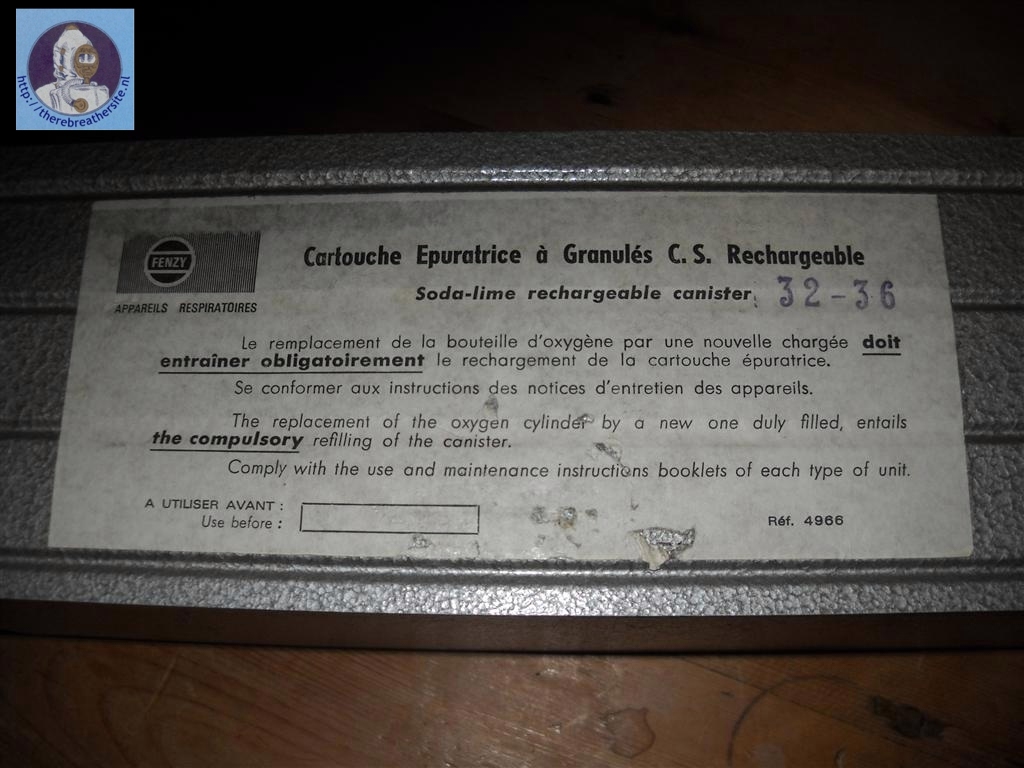 |
|
| Canister has not been in water. Could it be possible it is not suited for UW use? | |
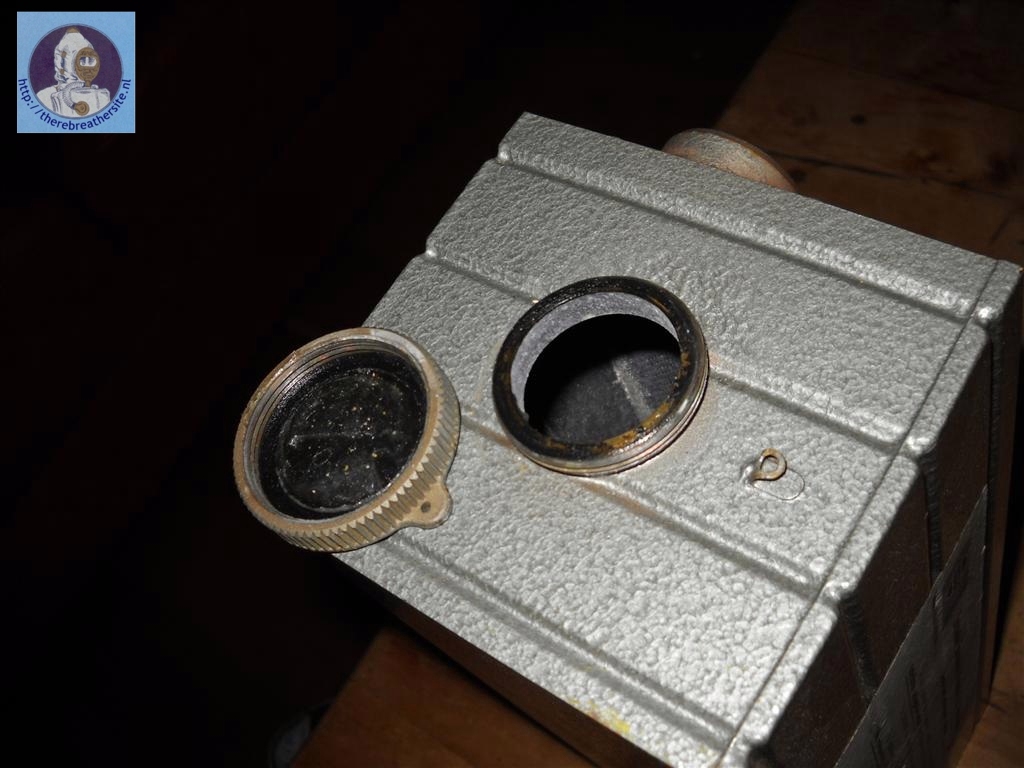 |
|
| The cannister filling point. Chain between cap and scrubber is missing.. | |
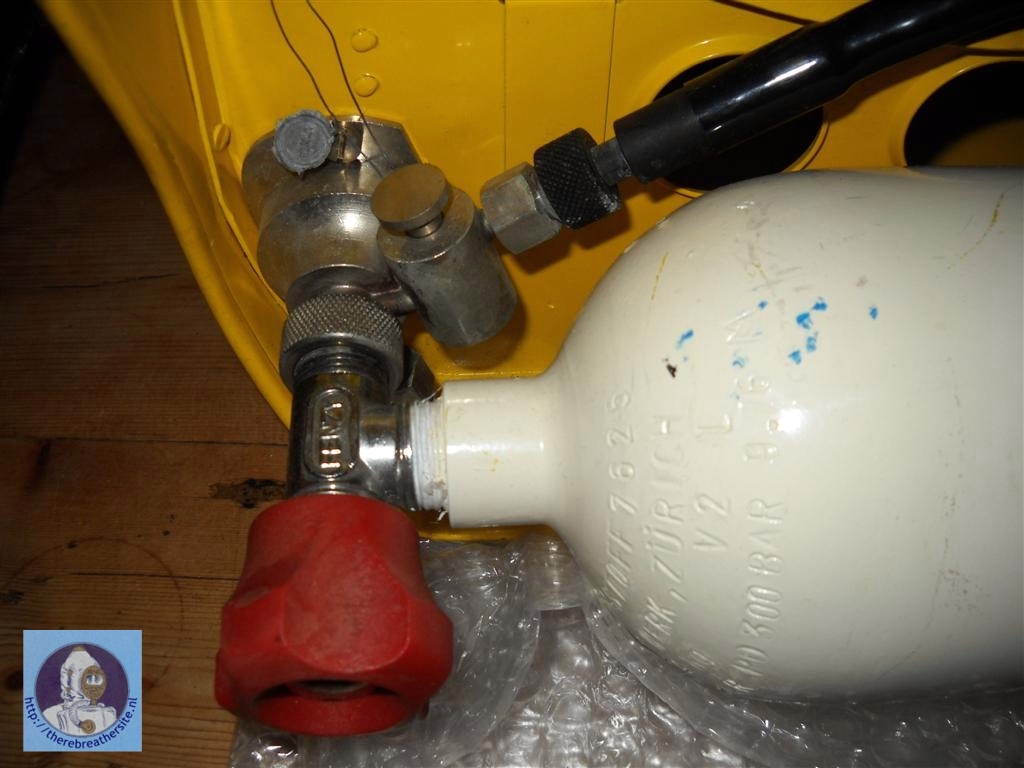 |
|
| Cylinder valve and manual shut-off valve to disconnect the pressuregauge from the breathing system. (for example when damaged during operation) | |
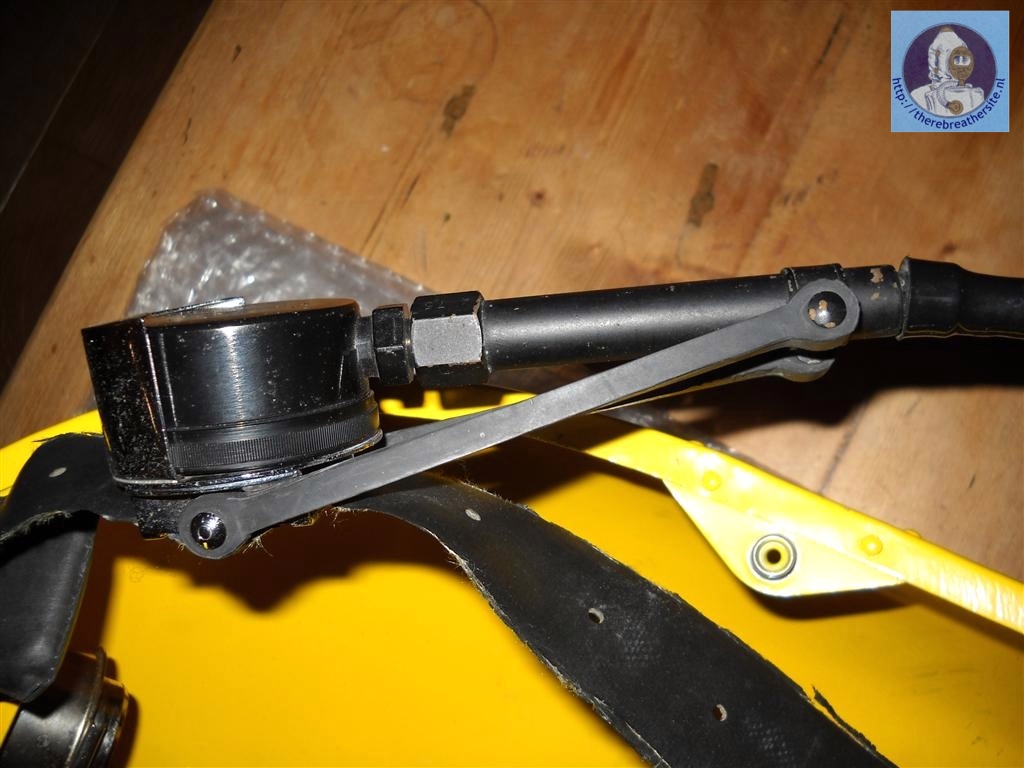 |
|
| The pressure gauge is well protected in the gauge holder. Two rubber straps keep it in place. | |
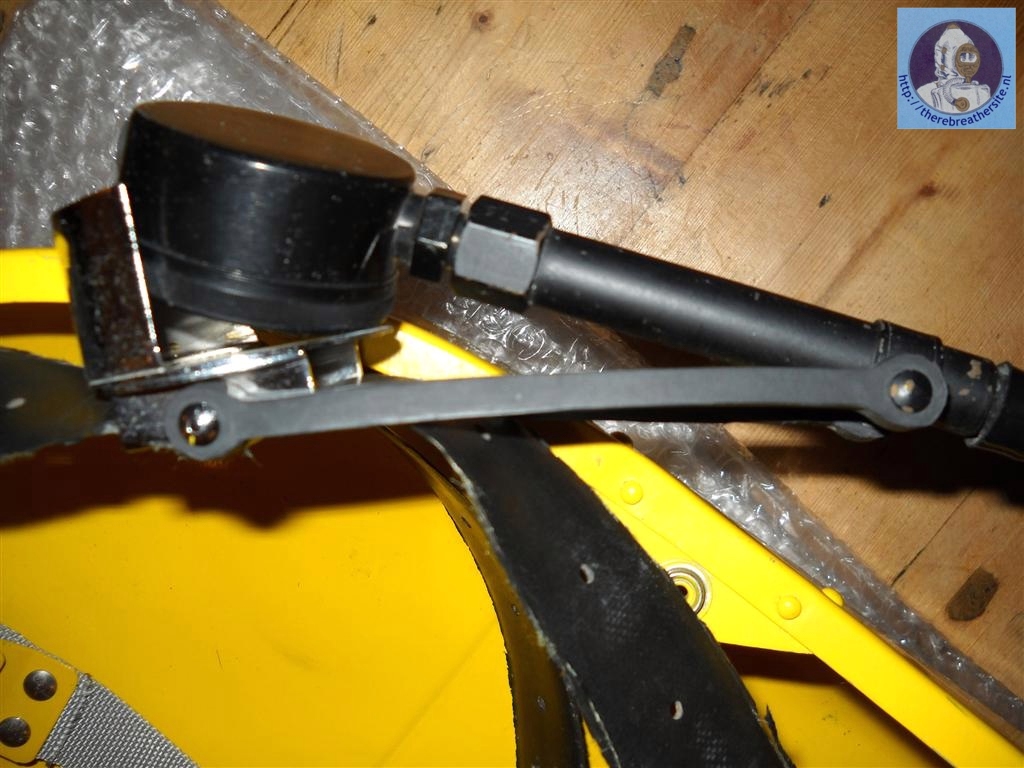 |
|
| Just pull to check the readings. Quit something else then the draeger construction... | |
 |
|
| Pressure gauge | |
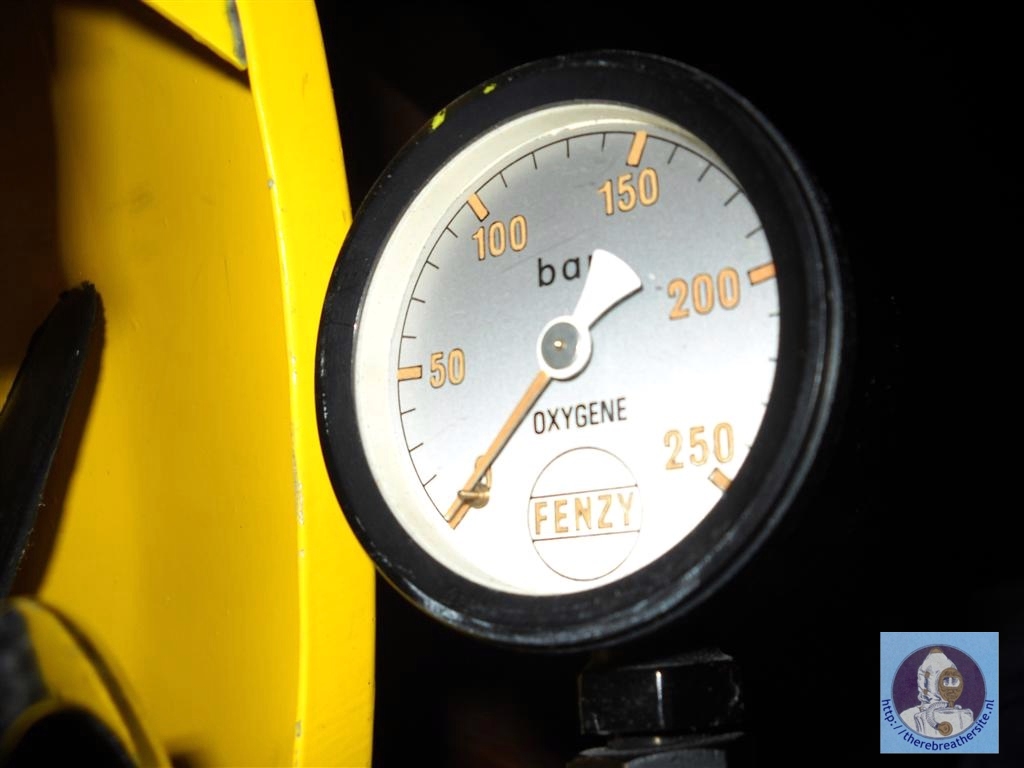 |
|
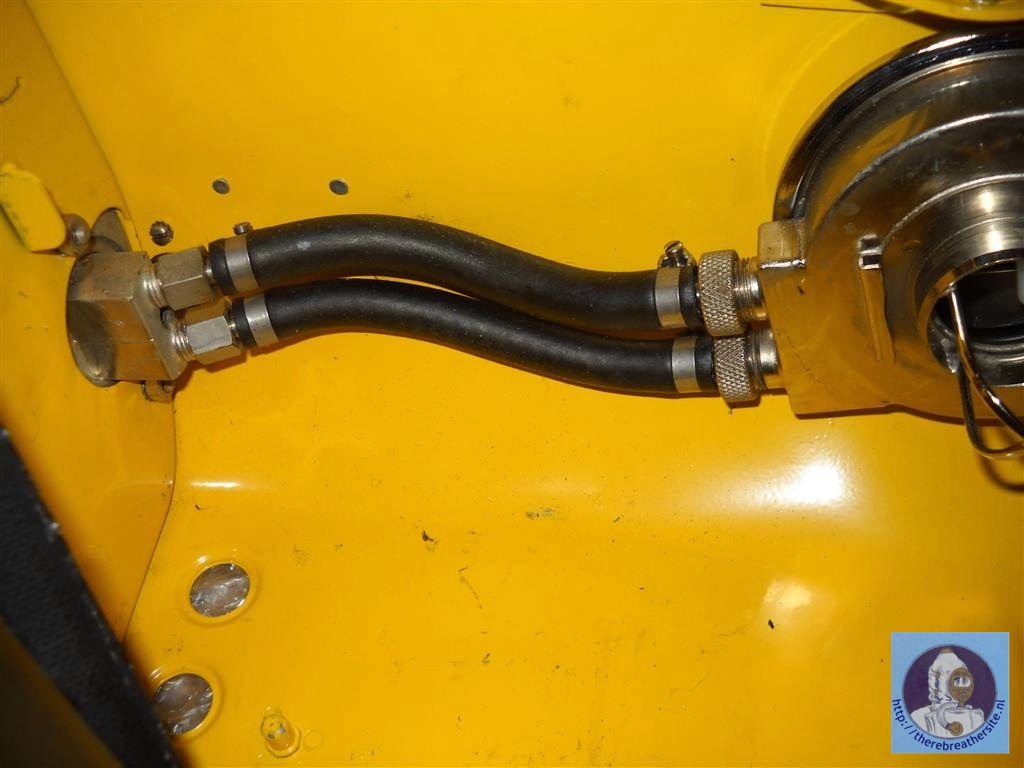 |
|
| Very clean design of the middle pressure line | |
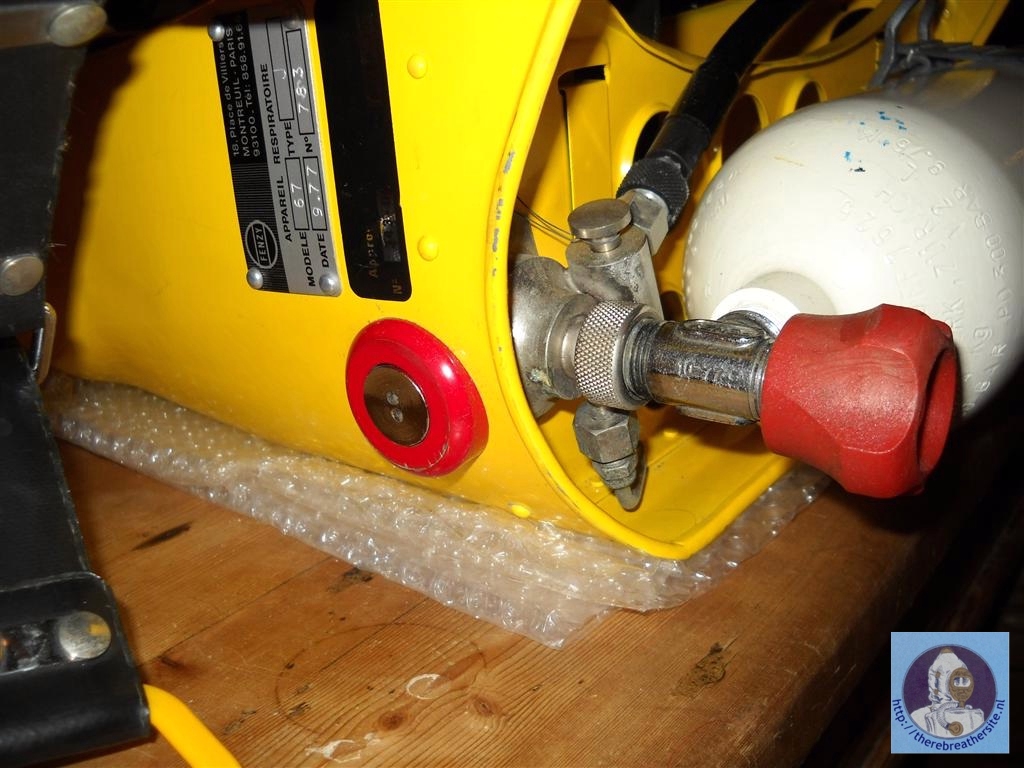 |
|
| The red button integrated in the housing is the manual by-pass operated by the user. | |
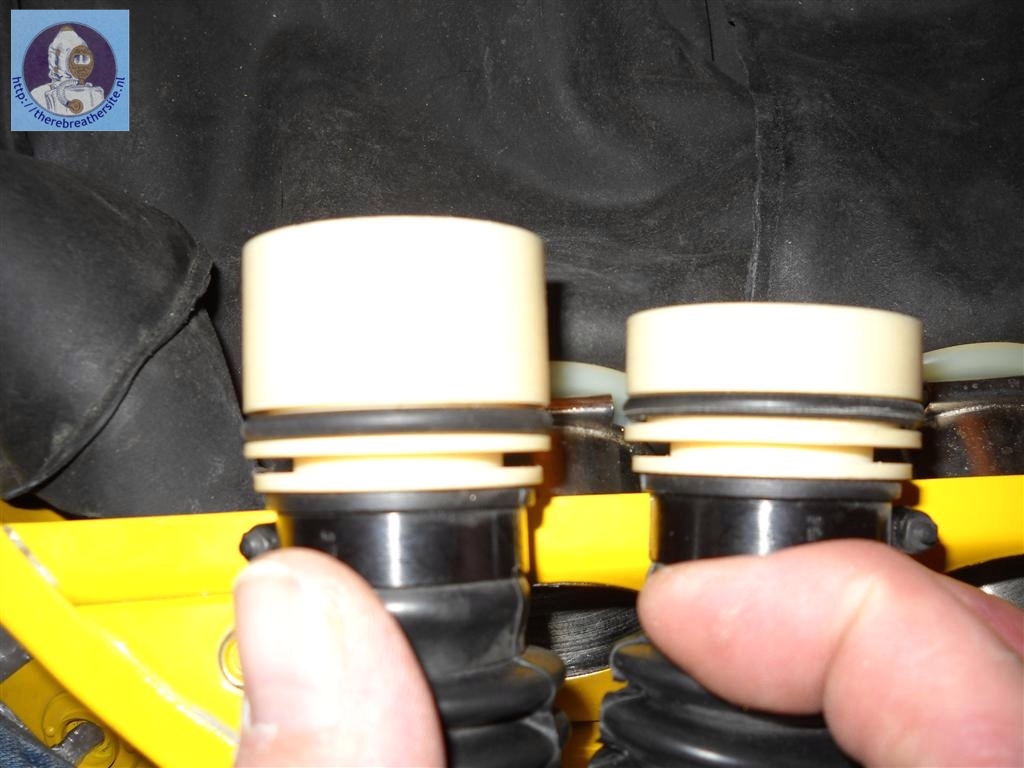 |
|
| Finally, to prevent the inhale and exhale hose is connected the wrong way they are made inreversable in a mechanical way ;)) | |
| I hope to inform you about new developments with this unit. | |
| November 2009 | |
| Please sign my Guestbook | |
| Email: jw.bech@quicknet.nl | |
Recently I was able to buy a nice Fenzy oxygen rebreather in Switserland. The unit was build in 1977 and is a very good condition. Customs in both Swiss and Holland had large interesse in this unit but finally they approved my import and charged me additional import tax. After several rebreather teardowns you are looking for new ideas and features. This french unit has some very interesting features. Please enjoy the teardown. I am working to obtain the original manual to complete this information!
Menu French Oxygen rebreathers
Main Menu Oxygen Rebreathers
Updates
Speedmenu
Search page
Webshop
Home
Therebreathersite:
Mainmenu:
Search this Website
Information about RB
Photo galleries
Historical Information
Links & Downloads
Reviews
Homebuilders
Electronics
Updates, speed menu
Web shop
Reviews SC rebreathers
Reviews CC rebreathers
RBís through the ages
Inspiration rebreather
Database Oxygen RBís
Database Semiclosed RBís
Updates
Speed menu
Search this web
Mainmenu:
Search this Website
Information about RB
Photo galleries
Historical Information
Links & Downloads
Reviews
Homebuilders
Electronics
Updates, speed menu
Web shop
Reviews SC rebreathers
Reviews CC rebreathers
RBís through the ages
Inspiration rebreather
Database Oxygen RBís
Database Semiclosed RBís
Updates
Speed menu
Search this web
